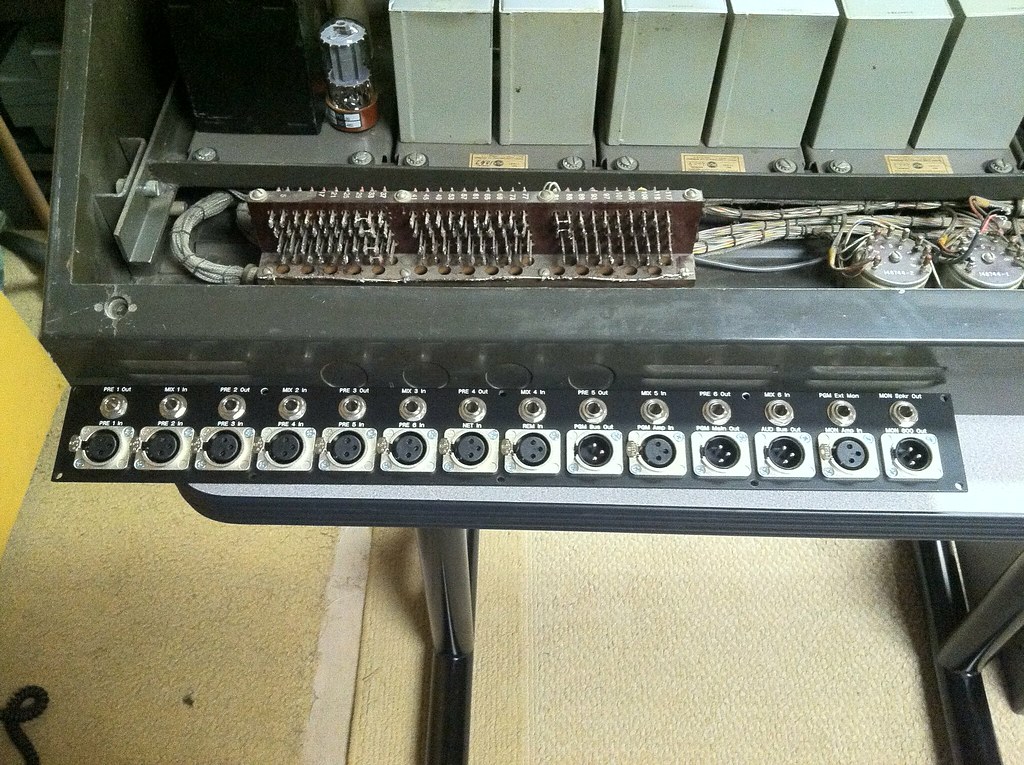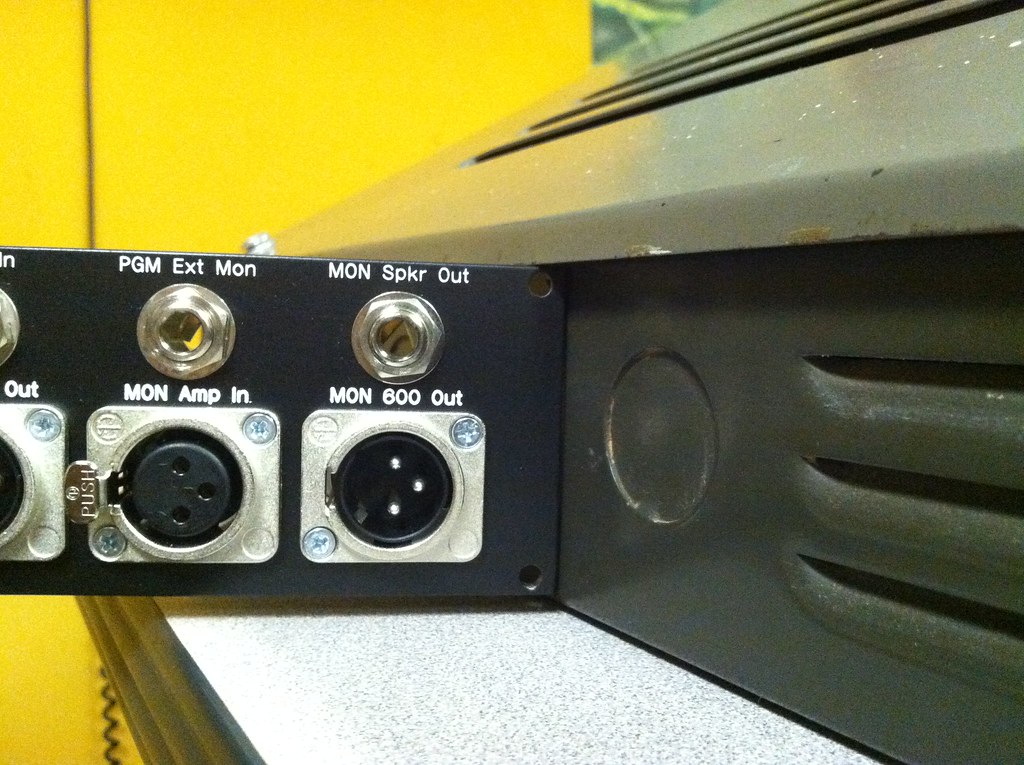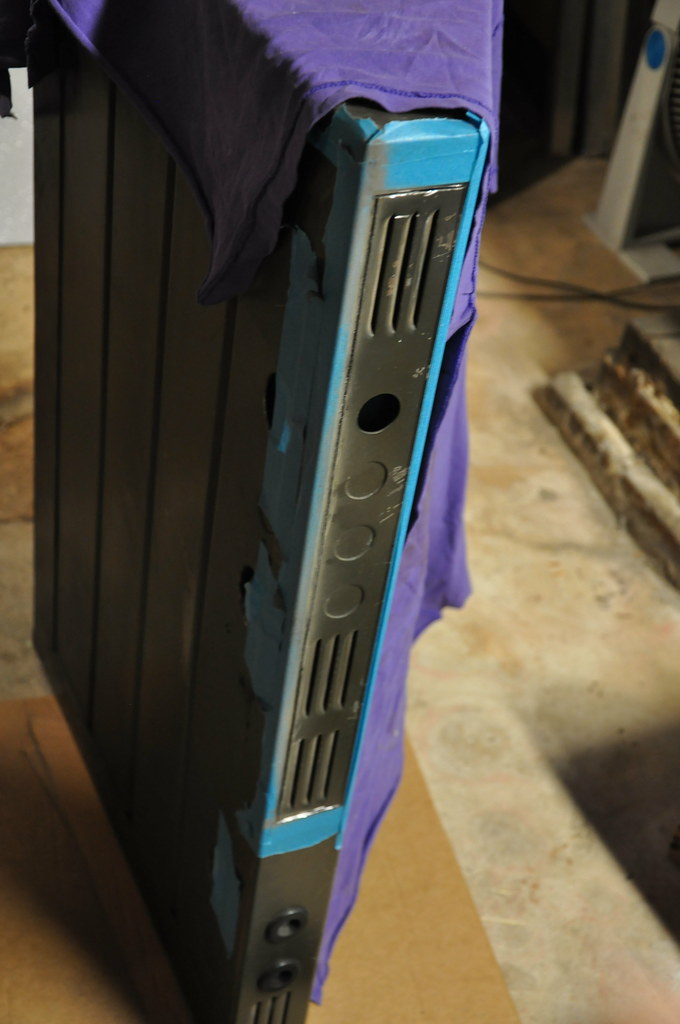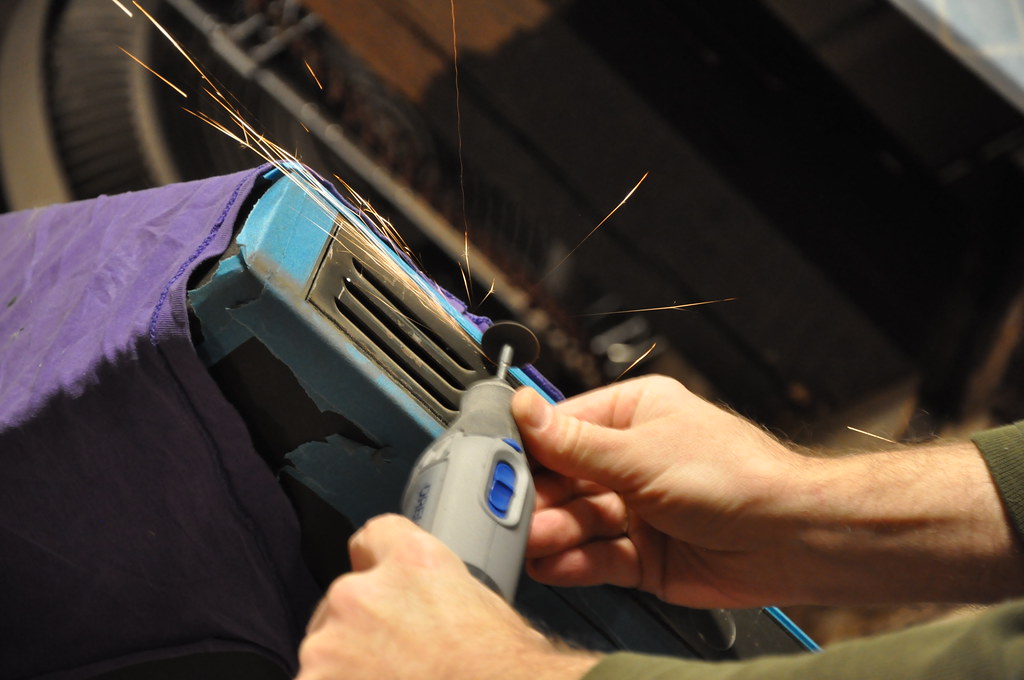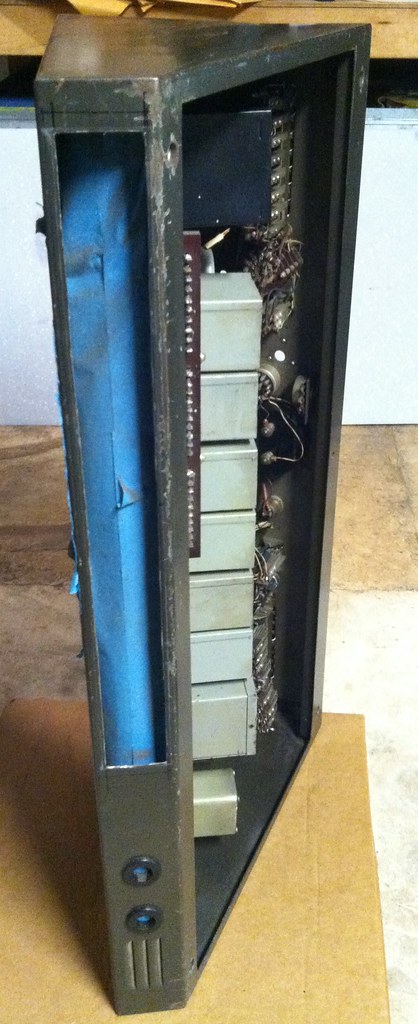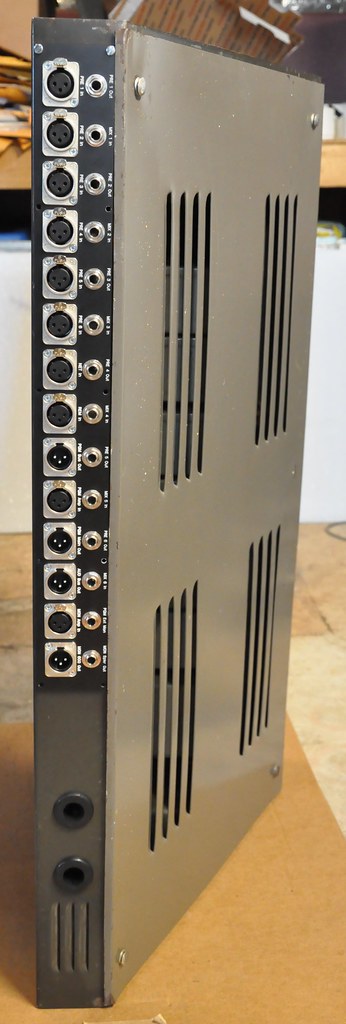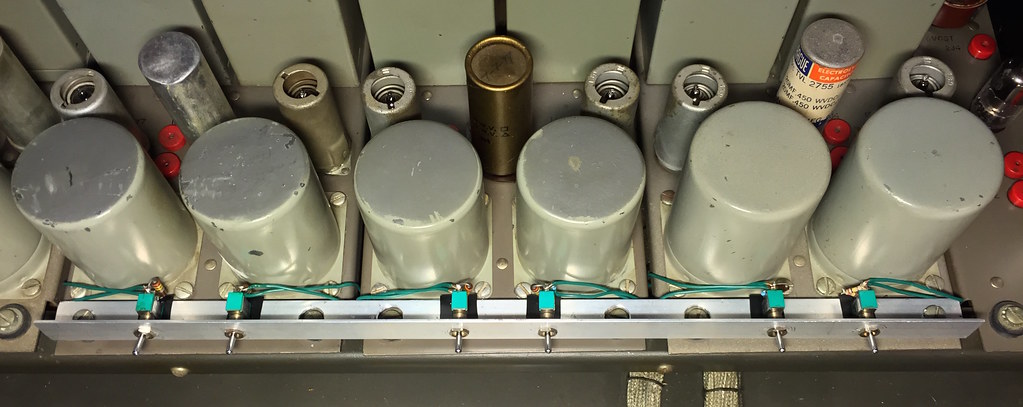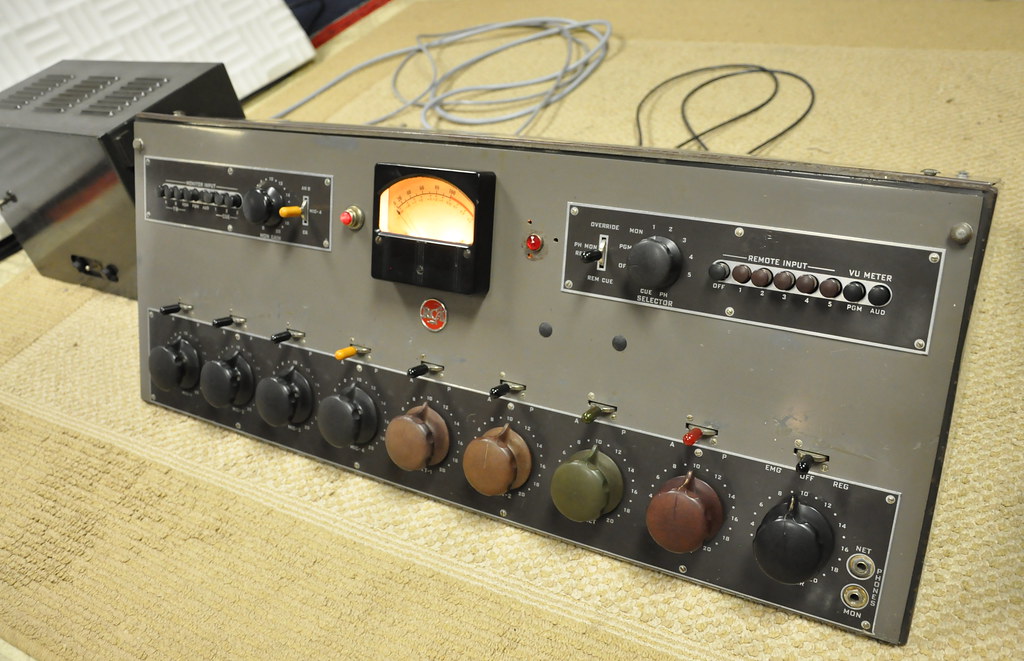Missed the last post somehow.
Lots of radio station mods were found and undone.
Mix bus resistance changes worked out fine, as planned. Bus losses are now roughly 26dB. Patching line in to the busses from a +20dBu FS converter still requires the channel faders and bus faders to be set fairly low, and there’s not an obvious noise penalty from the new bus loss figure when using the console stock PRE -> PGM. Spec for S/N is still met, according to my AP test set.
PGM is 84dB max. MON gain is 95dB max. Noise is primarily dependent on the 1st stage 12AY7, so selection is important with all that gain. I got the two amps reasonably close to one another for matched gain setting in that regard.
You can do a dual mono mix using PGM and MON amps as the two output amps. You can also go line in to the busses and take them back into a pair of PRE inputs and take their direct out, to use a more symmetrical pair of output amps. I’ve printed mixes both ways, and the PRE’s will feed a mix into +24dBu FS converters with healthy level and no detracting distortion; I’m sure THD % is high in the low frequencies if you measure it.
When taken direct out the PRE have some high treble boost from unloaded output condition, so there’s more ‘air’ than when loaded 600R within the normal console flow.
Obviously if you use it as a mixing platform, you can structure DAW outputs such that you get true stereo by spreading across DAW outputs.
Converting these to LCR stereo isn’t realistic, given the lack of needed contacts across all channel switches. As a stand alone live tracking platform with mono source mics it’s mono or dual mono (L/R).
This really is the height of options with RCA tube consoles, the final BC-3/5/6 series use Hi-Z mixing and don’t provide any patch points for breakout. This is the most modular console RCA made in the tube era. BC-5/5/6 have internal PSU’s, which has to have a noise penalty in practice.
Oh yeah, added some metalwork inside to put 3 position NFB gain mod switches on the PRE. Roughly -10/stock/+6.
There’s an interesting design aspect I haven’t noticed in other similar consoles. The busses are unbalanced like all US broadcast mixers were. Except the PGM and MON amps have been balanced relative to the mixing busses by grounding their input center taps, and feeding half of the mix bus inputs to one side of their input transformers and the other half to the other side. In my tests I found leaving that CT ground connected on the PGM amp lowered hum components by 3dB, but in the MON amp 60Hz dropped by 14dB with the CT floated. There may be a loop formed in this particular console with both grounded, since they have separate B+ feeds and differing current draws across the common B-/GND.
I’ll semi-confirm my suspicion that the ancient erroneous B+ value listed around the interwebs for the PRE of 360ish VDC is the result of using the original PSU with the MON amp disconnected. All B+ voltages come off the same resistive network, so any change on one branch makes the others swing. Even seemingly minor resistive variances from the listed values cause appreciable B+ swings given the current. In short, don’t fire one of these up without real attention to the operating voltages, knowledge that all amps are connected to power properly, and good working tubes are in all slots. The first part is tapping the primary of the power transformer to the correct voltage; it may be set for 105/115/125 AC. A Variac won’t be your friend much either, as the (3) 6V6’s really don’t operate properly with much of a filament voltage drop, though most preamp tubes are unaffected by low filament values, like 75%. If you fuse the relay portion of the power supply and have rebuilt it replacing the selenium rectifier with silicon, you'll need to add series resistance and ideally tap the AC input at 125VDC to account for the expected selenium losses.



